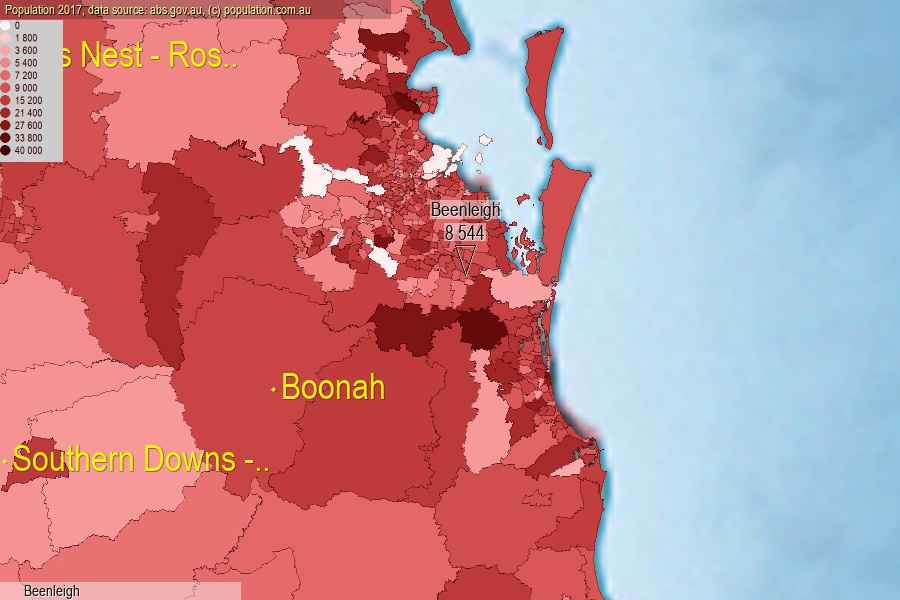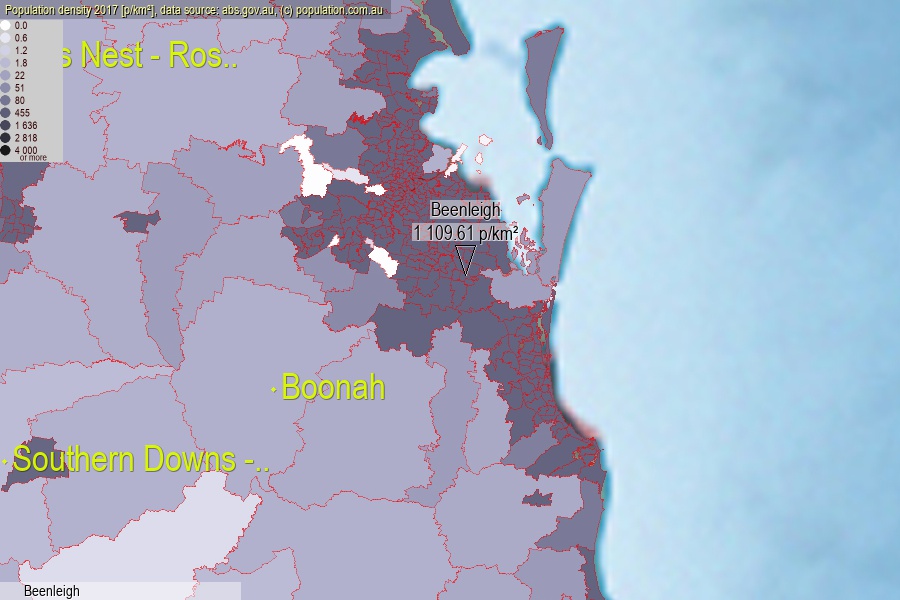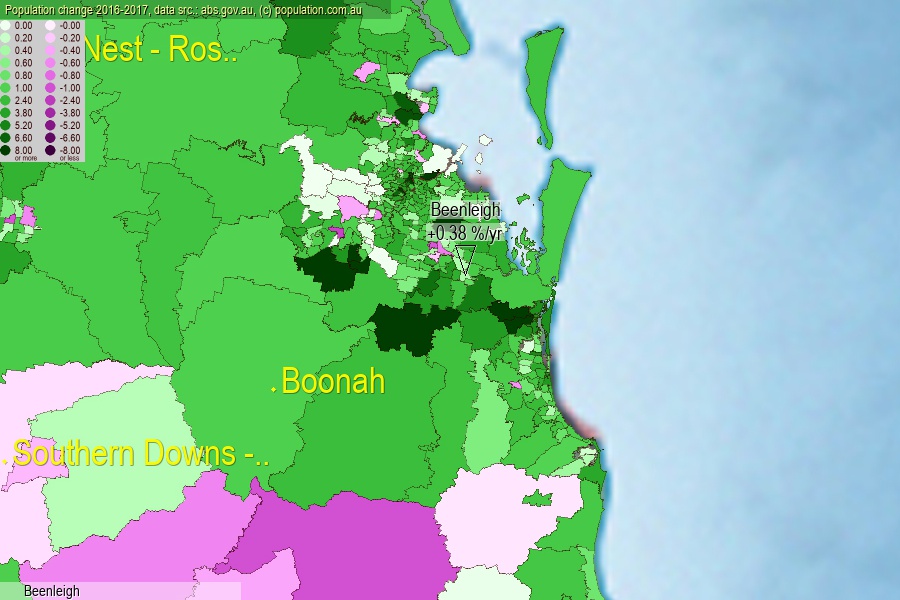 population.com.au
population.com.auLast official estimated population of Beenleigh (as Statistical Area Level 2) was 8 544 people (on 2017-06-30)[2]. This was 0.03% of total Australian population and 0.171% of QLD population. Area of Beenleigh is 7.70 km², in this year population density was 1 109.61 p/km² . If population growth rate would be same as in period 2016-2017 (+0.38%/yr), Beenleigh population in 2025 would be 8 804. [0]



Click to enlarge. Beenleigh is located in the center of the images.
Population [people], population density [p./km²] and population change [%/year] [2]
View borders » (new window) [4]
[1991-1992] +0.14 %/Yr.
[1992-1993] -0.76 %/Yr.
[1993-1994] -1.54 %/Yr.
[1994-1995] -1.15 %/Yr.
[1995-1996] -1.14 %/Yr.
[1996-1997] -0.56 %/Yr.
[1997-1998] -0.38 %/Yr.
[1998-1999] +0.41 %/Yr.
[1999-2000] +1.42 %/Yr.
[2000-2001] +1.33 %/Yr.
[2001-2002] +1.92 %/Yr.
[2002-2003] +1.32 %/Yr.
[2003-2004] +1.18 %/Yr.
[2004-2005] +1.48 %/Yr.
[2005-2006] +0.80 %/Yr.
[2006-2007] -0.16 %/Yr.
[2007-2008] +0.28 %/Yr.
[2008-2009] +0.40 %/Yr.
[2009-2010] +0.49 %/Yr.
[2010-2011] +1.32 %/Yr.
[2011-2012] -0.09 %/Yr.
[2012-2013] +0.05 %/Yr.
[2013-2014] -0.12 %/Yr.
[2014-2015] -0.04 %/Yr.
[2015-2016] -0.04 %/Yr.
[2016-2017] +0.38 %/Yr.
[0] Calculated with linear interpolation from officially estimated population
[1] Read more about SA2 and Australian Statistical Geography Standard (ASGS) on abs.gov.au
[2] Population data from Australian Bureau of Statistics (Population and density: 2017; change: 2016-2017)
[3] Digital Boundaries: Australian Statistical Geography Standard (ASGS) 2016.
[4] Border coordinates are simplifyed using Ramer-Douglas-Peucker algorithm.